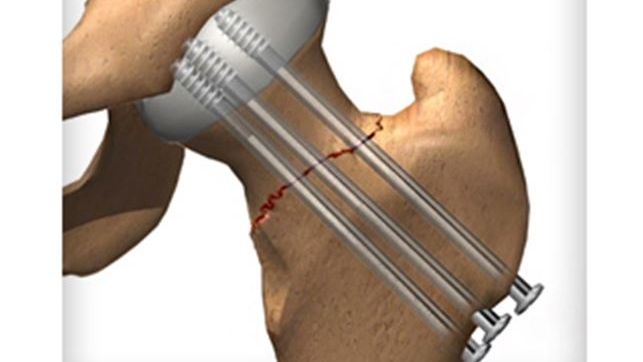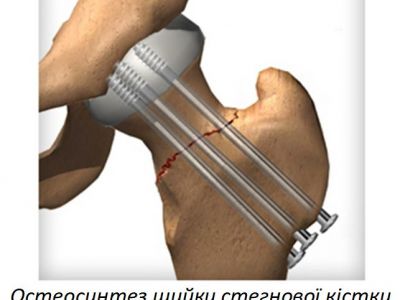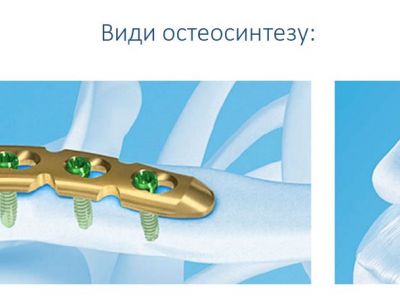Osteosynthesis of juxtaarticular and intraarticular fractures
The Clinic applies osteosynthesis for simple and complicated fractures, among them: comminuted, juxtaarticular and intra-articular ones. We use a wide scope of methods, among them: external fixation devices, bone osteosynthesis by locking plates and nails etc. Methods of less-invasive surgery are also widely applied.
Published: 20.08.2018
The word Osteosynthesis in Greek means literally “connection of bones”. This connection is necessary after bone fracture for healing not only the bone itself, but also soft tissues located nearby. Osteosynthesis means installation of different implants enabling bone fragments to adhere (i.e. surgical intervention).
The implants ensure not only correct union of the bone fragments, but also anatomically correct positioning thereof and proper fixation in such correct position.
For success of the bone healing, surgical operation shall be done by qualified expert, namely – traumatologist-orthopedist.
Types of osteosynthesis:
- Internal fixation (also known as internal osteosynthesis) stipulates fixation of bone fragments by plates, screws and nails and leaving the implants inside of a human body.
- External fixation stipulates fixing elements, remote from surface of the bone (in such cases the famous Ilizarov frame or other similar devices are applied).
- Closed (or extrafocal) and open osteosynthesis. The difference lays in baring fracture area during the operation.
- Less-invasive stipulates installation of fixing elements through punctures or small cuts on skin.
- Absolute fixation means the absence of any micro-motions between the bone and tissues.
- Relative fixation stipulates slight micro-motions in fracture area, although such motions shall be unable to cause any paid feelings.
- Matching (or repositioning) osteosynthesis involves bone fixation and keeping bone fragments upon condition of lack of loading on the limb.
- Functionally stable osteosynthesis lays in fixing bone fragments while movements of extremities.
Decision on the type of osteosynthesis shall be made by well-experienced doctor; inasmuch success of bone healing depends strongly thereon. Moreover, osteosynthesis could be applied only in first days after injury. If a patient is in a severe general condition, such operation could be made only after normalization thereof.
Osteosynthesis is one of the fastest and accelerated methods of fractures treatment, because bone union occurs without additional use of plaster dressing. This condition ensures the possibility of early functional treatment that promotes fast recovery of the damaged limb’s functioning.
- Tag:
- osteosynthesis knee osteosynthesis hip fixation of the shoulder joint
- elbow osteosynthesis
- fixation of the ankle joint
- knee joint fixation Kyiv
- Kyiv osteosynthesis of the hip joint
- shoulder joint fixation Kyiv
- Kyiv osteosynthesis elbow
- ankle fixation Kyiv

